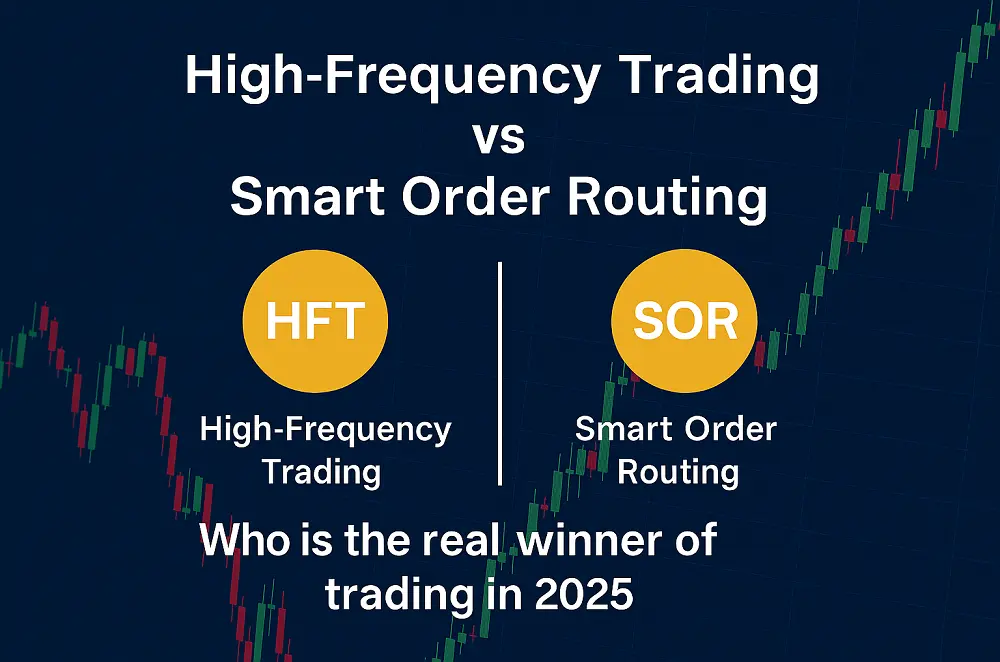With algorithmic trading gaining momentum in the Indian and global stock markets, there is now a competition between two techniques – High-Frequency Trading (HFT) and Smart Order Routing (SOR).
While the strength of HFT is “speed” and “split second decision”, the specialty of SOR is “smartness” and “better price discovery.” Now the question arises – who is the real player in this fast-paced trading environment of 2025?
What is High-Frequency Trading (HFT)?
HFT is a type of algorithmic trading technique, in which thousands of trades are made in milliseconds or microseconds using superfast computers and networks. Its purpose is to make profits from very small price differences.
Example: If a stock is available at ₹100.05 on NSE and ₹100.10 on BSE at the same time, the HFT system can buy and sell it from both places instantly and make a profit.
In 2025, many big HFT firms in India such as Tower Research, Hudson River Trading, and APT Portfolio are using this technology extensively.
What is Smart Order Routing (SOR)?
The focus of SOR is not on speed but on smart decisions. This technology sends the order at a “better price” in a “better time” between different exchanges, dark pools or liquidity providers in the market.
For example: If a trader has placed an order to buy 100 shares at ₹500, the SOR system checks on which platforms this order can be fulfilled at the best price and with minimum slippage.
In 2025, brokerage houses like Zerodha, Upstox, and IIFL are pushing SOR algo infrastructure for their retail users.
Which is better? In comparison
Feature | HFT | SOR |
Speed | Extremely fast | Medium |
Decision making | Fully algorithmic | Algo + logic based |
Users | Mostly institutional | Both retail and institutional |
Profit method | Small price variations | Order optimization |
Cost | High Server and network expenses | Comparatively less expensive |
Risk | High Volatility | Relatively low |
What does the trend say in 2025?
According to the National Stock Exchange (NSE), in the first quarter of 2025:
38% of trades were processed by HFT systems.
- On the other hand, SOR-based order processing saw a growth of 51%.
- According to experts, while HFT has given quick profits to institutional investors, SOR has helped retail users get better entry and exit prices.
What do experts say?
Vineet Jain, founder of AlgoQuant, says:
“In the world of HFT, a millisecond delay can lead to losses worth crores. But not every trader needs HFT. SOR systems are now being equipped with AI and are fast becoming an affordable option.”
At the same time, SEBI has also indicated to work on issues related to transparency and access related to HFT. This is likely to give further boost to solutions like SOR.
What are the risks?
Dangers of HFT:
- Events like flash crashes, where the market collapses in a few seconds.
- Suddenly large volume of trading causes volatility in the market.
Risks of SOR:
- Problem of “slippage” due to lack of proper routing logic.
- Slow internet speed or API lag can lead to missed trades.
Future Direction
In the years after 2025, it is believed that a combination of both the techniques (Hybrid Approach) will be seen more.
While HFT will be used for micro-trades and spread arbitrage, the role of SOR will increase in long-term portfolio entry and exit.
NSE and BSE are also now promoting APIs and infrastructure that are SOR-supportive and help brokers take decisions in less time.

